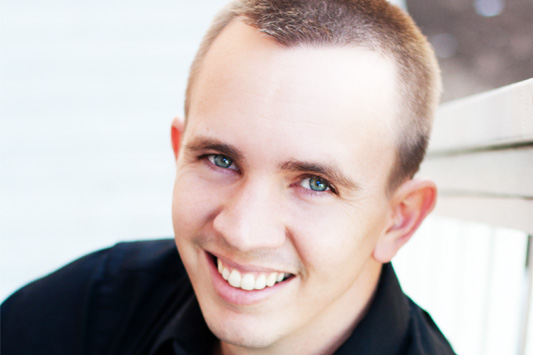
Encouraging Introverts to Speak Up in School
By John Spencer
This story is one of three that we’re featuring on the question of class participation. For other perspectives, see “Participation Penalizes Quiet Learners” and “Class Participation: Let’s Talk About it.”
As a student, I was an eager hand-raiser. I spoke up. I shared my opinions. I wasn’t particularly quiet. Inside, though, I was terrified. I didn’t want to be caught off-guard, forced to share my thoughts to an entire class without having the chance to think through things on my own. For this reason, I developed a strategy. When a teacher first started talking about a particular topic, I’d jot down five of the best questions I could conjure up. I would rehearse them in my head until the words sounded right. This allowed me to speak up without being put on the spot.
If I wasn’t prepared when a teacher called on me, I’d freeze up. I’d shake and sweat, stammering and sputtering over my words. A few kids would mock me, but most students would stare in shock as I struggled. In most cases, the teachers would assume I hadn’t been paying attention, when the truth was I needed to work through my responses alone before sharing my thoughts with the class.
When I became a teacher, I promised myself that I wouldn’t put my students through that same experience. I wouldn’t call on students who didn’t raise their hands. I wouldn’t force a shy student to speak up. I would allow introverts the time to process information and decide on their own terms if they wanted to speak in front of the class.
Then, in my sixth year of teaching, a student challenged this practice. He wrote me a note that read, “Don’t let me get away with being too quiet. Make me talk even if it’s hard for me. You ask loud kids to stop interrupting and blurting out, right? So ask me to speak up, please.”
I realized that choosing to speak up or remain quiet was a complicated issue that required a nuanced solution. There was an inherent tension between respecting a student’s temperament and challenging a student to conquer an uncomfortable task. This is why, although I still don’t grade students for participation, I do require my students to speak up in front of a group.
The Dark Side of Participation Points
In her story for the Atlantic, Jessica Lahey explained her stance on grading students in participation. This is a common practice, but one that I find concerning.
Too often students are criticized for being too loud or too quiet. The ideal is a happy medium that doesn’t square with who students actually are as people. This problem is most obvious when teachers shame the overly social student. However, it’s just as damaging for the quiet student who, when trying to process information internally, is told to “just pay attention” or to “get over” the fear of speaking up. Students internalize the message that being quiet is a problem they need to overcome instead of a unique quality they can embrace.
Pushing for participation
While we must respect student identity, this doesn’t mean introverts should never be challenged. Just as I expect extroverted students to engage in quiet self-reflection, I also require introverted students to speak up in front of the class. Public speaking is a valuable life skill, uncomfortable as it might make certain students feel. That said, I tailor class participation requirements so that introverts and extroverts alike can thrive. Here are a few strategies I use:
- I allow students time to prepare, and even rehearse, what they want to say. It isn’t simply a matter of a student being shy or outgoing. Introverted students often need the chance to process their ideas and thoughts before expressing them to a group.
- I understand that equity and equality aren’t the same in class discussions. While I require all students to participate at some point, I give students the permission to decide the frequency and timing of participation.
- I start with partner or small group discussions before moving into a whole class discussion. This allows introverts to think through the ideas in a safe place before moving toward the whole group.
- I explore alternative methods of speaking up. I might allow introverted students to prepare, record, and edit a podcast. Or I’ll let students develop questions for a social media chat.
- I recognize that active listening (the kind that quiet students often engage in) is also a vital part of participation.
- I let students ease into participation. Many introverts need time to see what the group dynamics are before transitioning into discussion mode. This is why I avoid “ice breakers” at the beginning of the year. Most extroverts have broken the ice the minute they walked through the door, and many of the introverts are perfectly comfortable letting the ice melt slowly. I don’t usually require introverted students to speak up in class until the third or fourth week.
- I conference ahead of time with students who are anxious. I affirm their courage in speaking up and allow them to share their frustrations with the situation.
- I allow students to be uncomfortable. Even after I help students adapt, I may have some who resent speaking up. Then again, I may have students who hate silence. Nobody said learning was supposed to be comfortable.
- I let students decide when they want to speak up. I tell students, “I want you to say something in our discussion.” I let them know what the topic will be ahead of time. When they’re ready, they raise their hands to speak up.
- I give them an out. While participation is expected in my class, I will ultimately have a few students who simply refuse to talk in front of a group. I realize, though, that this is not an act of defiance. It is fear. I do what I can to make it safe for students to speak up. However, in the long run, I know that a student can only find his or her voice when motivated by desire and not compulsion.
Ultimately, schools should be adapting the system to student identity rather than requiring students to change who they are to fit the system. By being flexible and providing accommodations, I have attempted to create in my classroom a safe place for introverts to speak up. It doesn’t always work perfectly, and it isn’t always comfortable. I hope, though, that my students feel affirmed in who they are while being challenged to grow.











